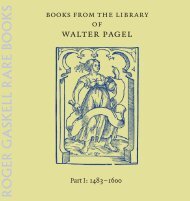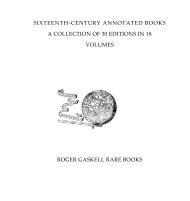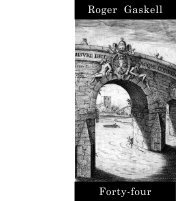pdf - Roger Gaskell Rare Books
pdf - Roger Gaskell Rare Books
pdf - Roger Gaskell Rare Books
You also want an ePaper? Increase the reach of your titles
YUMPU automatically turns print PDFs into web optimized ePapers that Google loves.
Persian from a woodcut. Full page engraved portrait of the author on<br />
2✠1v signed ‘I. Laurus f.’.<br />
210 x 150mm. Title soiled and a little frayed in the margins; last leaf<br />
with several round wormholes aVecting a few letters; some light stains.<br />
Binding: Resewn and rebound in recent marbled boards.<br />
Provenance: Initials ‘B.F.’ in an early hand on title.<br />
First edition. Reprinted at Strasbourg in 1609; an English translation was<br />
published in 1658. Norman 1725; Duveen p. 481.<br />
Porta’s major work on distillation is his third and last treatment of the subject.<br />
The Wrst two were sections of his great Magia naturalis, Wrst published in 1561<br />
(in 4 books) and in extended form in 1589 (in 20 books). The section on<br />
distillation is further expanded for the present work (Partington p. 24). De<br />
distillatione lib. X ‘is of interest as giving a more comprehensive view of the<br />
applications of distillation in the sixteenth century than is found in any other<br />
work of the period’ (Stillman).<br />
The Wrst and longest, and the most fully illustrated, of the nine books<br />
deals with diVerent forms of stills. Porta describes various forms of distilling<br />
apparatus for various uses including the preparation of essential oils, on which<br />
Forbes says he is a very good authority having had occasion to observe the<br />
industry in Naples. Porta was the Wrst to give yields from diVerent materials.<br />
He also deals with various stills designed to produce diVerent strengths of<br />
alcohol, all with air cooled condensers; one still is heated by the sun. In the<br />
same spirit as his Physiognomonia and Phytognomonica, in one section he<br />
compares the stills and their functions with animals. Hot things require a still<br />
with a short thick neck, just as nature has given ‘angry and furious creatures’<br />
like the bear and the lion short strong necks. After this preliminary treatise on<br />
stills, the other 8 books give more speciWc details of the preparation of perfumes<br />
and the distillation of essential oils; resins; and woods; and the extraction of<br />
virtues of substances, such as aqua vita essentia, that is alcohol.<br />
The Wne author portrait by Giacomo Lauro or Iacobus Laurus (active<br />
c.1583–c.1645) shows Porta aged 64 surrounded by motifs referring to his<br />
his various studies: physiognomy, astrology, geometry, optics, fortiWcation,<br />
cryptography and distilling.<br />
Partington ii, pp. 15–25; R. J. Forbes, A short history of the art of distillation (1970)<br />
pp. 117–121 (noting this work but in fact describing the distillation section of<br />
Magia naturalis (1689); John Masxon Stillman, The Story of Early Chemistry<br />
(1924), pp. 350–51.<br />
155<br />
POWER, Henry (1623–1668)<br />
Experimental philosophy, in three books: containing new<br />
experiments [brace] microscopical, mercurial, magnetical. With<br />
some deductions, and probable hypotheses, raised from them, in<br />
avouchment and illustration of the now famous atomical hypothesis.<br />
London: printed by T. Roycroft, for John Martin, and James Allestry, at<br />
the Bell in S. Pauls Church-yard, 1664.







